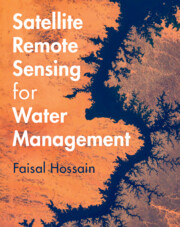Refine search
Actions for selected content:
547 results
A new cavity-backed sinuous antenna for microwave imaging applications
-
- Journal:
- International Journal of Microwave and Wireless Technologies , First View
- Published online by Cambridge University Press:
- 02 December 2025, pp. 1-10
-
- Article
-
- You have access
- Open access
- HTML
- Export citation
Effects of Land-Use Intensity on Archaeological Survey
-
- Journal:
- Advances in Archaeological Practice , First View
- Published online by Cambridge University Press:
- 24 November 2025, pp. 1-18
-
- Article
-
- You have access
- Open access
- HTML
- Export citation
Brusselstown Ring: a nucleated settlement agglomeration in prehistoric Ireland
-
- Journal:
- Antiquity , First View
- Published online by Cambridge University Press:
- 18 November 2025, pp. 1-8
-
- Article
-
- You have access
- Open access
- HTML
- Export citation
Quantifying heterogeneous glacier dynamics in Lunana, Bhutan, using spatiotemporally high-resolution satellite imagery
-
- Journal:
- Journal of Glaciology / Volume 71 / 2025
- Published online by Cambridge University Press:
- 14 November 2025, e126
-
- Article
-
- You have access
- Open access
- HTML
- Export citation
Glacier or not? The importance of nuance in definitions of vanishing glaciers
- Part of
-
- Journal:
- Annals of Glaciology / Volume 66 / 2025
- Published online by Cambridge University Press:
- 13 November 2025, e32
-
- Article
-
- You have access
- Open access
- HTML
- Export citation
Effects of tropical cyclone Jasper at Low Island, northern Great Barrier Reef
-
- Journal:
- Cambridge Prisms: Coastal Futures / Volume 3 / 2025
- Published online by Cambridge University Press:
- 11 November 2025, e27
-
- Article
-
- You have access
- Open access
- HTML
- Export citation
Training, fieldwork and collaboration in a new remote sensing method for heritage monitoring in Libya
-
- Journal:
- Libyan Studies , First View
- Published online by Cambridge University Press:
- 11 November 2025, pp. 1-11
-
- Article
-
- You have access
- Open access
- HTML
- Export citation
Groundwater potential mapping in India: A review of approaches and pathways for sustainable management
-
- Journal:
- Cambridge Prisms: Drylands / Volume 2 / 2025
- Published online by Cambridge University Press:
- 03 November 2025, e12
-
- Article
-
- You have access
- Open access
- HTML
- Export citation
Modelling suspended sediment concentration in coastal Ireland using machine learning
-
- Journal:
- Cambridge Prisms: Coastal Futures / Volume 3 / 2025
- Published online by Cambridge University Press:
- 23 October 2025, e26
-
- Article
-
- You have access
- Open access
- HTML
- Export citation
ARCfieldLAB: Stimulating Networks, Knowledge Exchange, and Experimentation in Applied Sensor Archaeology for Dutch Field Research
-
- Journal:
- Advances in Archaeological Practice , First View
- Published online by Cambridge University Press:
- 14 October 2025, pp. 1-14
-
- Article
-
- You have access
- Open access
- HTML
- Export citation
A tethered hunting and mobility landscape in the Andean highlands of the Western Valleys, northern Chile
-
- Article
-
- You have access
- Open access
- HTML
- Export citation

Satellite Remote Sensing for Water Management
-
- Published online:
- 10 October 2025
- Print publication:
- 04 September 2025
-
- Textbook
- Export citation
Structural weaknesses in ice mélange revealed by high resolution ICEYE SAR imagery
-
- Journal:
- Journal of Glaciology / Volume 71 / 2025
- Published online by Cambridge University Press:
- 19 September 2025, e108
-
- Article
-
- You have access
- Open access
- HTML
- Export citation
Subtle height change reveals melt water movement around and under glacial ice, an example from northern Ellesmere Island, Canada
-
- Journal:
- Journal of Glaciology / Volume 71 / 2025
- Published online by Cambridge University Press:
- 16 September 2025, e107
-
- Article
-
- You have access
- Open access
- HTML
- Export citation
2 - An Introduction to Remote Sensing from Space
-
- Book:
- Satellite Remote Sensing for Water Management
- Published online:
- 10 October 2025
- Print publication:
- 04 September 2025, pp 18-41
-
- Chapter
- Export citation
1 - Introduction
-
- Book:
- Satellite Radar Interferometry
- Published online:
- 13 September 2025
- Print publication:
- 04 September 2025, pp 1-7
-
- Chapter
-
- You have access
- Open access
- Export citation
1 - Why Manage Water with Satellite Remote Sensing?
-
- Book:
- Satellite Remote Sensing for Water Management
- Published online:
- 10 October 2025
- Print publication:
- 04 September 2025, pp 1-17
-
- Chapter
- Export citation
Preface
-
- Book:
- Satellite Remote Sensing for Water Management
- Published online:
- 10 October 2025
- Print publication:
- 04 September 2025, pp xiii-xv
-
- Chapter
- Export citation
A Kalman filter-based framework for assimilating remote sensing observations into a surface mass balance model
- Part of
-
- Journal:
- Annals of Glaciology / Volume 66 / 2025
- Published online by Cambridge University Press:
- 22 August 2025, e23
-
- Article
-
- You have access
- Open access
- HTML
- Export citation
Filling the GRACE/-FO gap of mass balance observation in central west Greenland by data-driven modelling
- Part of
-
- Journal:
- Annals of Glaciology / Volume 66 / 2025
- Published online by Cambridge University Press:
- 19 August 2025, e20
-
- Article
-
- You have access
- Open access
- HTML
- Export citation

